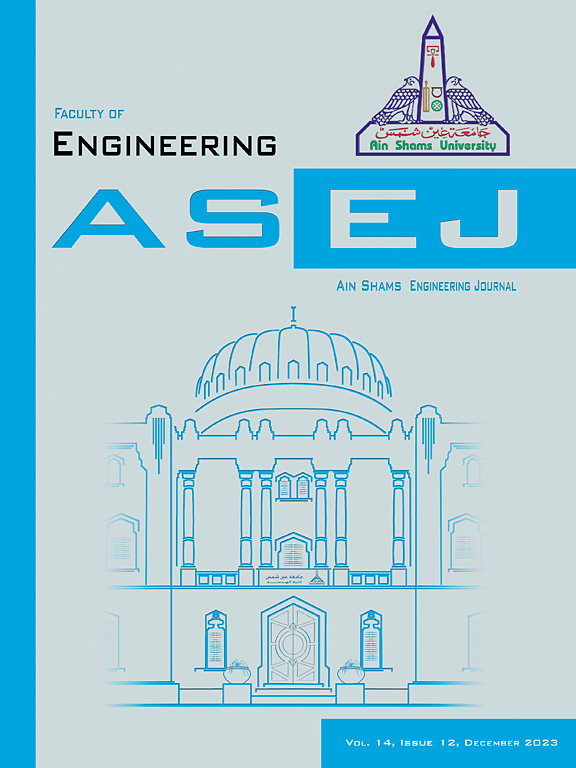Enhancing transport processes in stratified fluids: Exploring rotational and stretching effects coupled with magnetic fields, heat, mass transfer and thermal/solutal slip
IF 6
2区 工程技术
Q1 ENGINEERING, MULTIDISCIPLINARY
引用次数: 0
Abstract
This research paper presents an in-depth investigation into the complex interactions governing stratified fluid flow in the presence of rotational and stretching phenomena, magnetic field influences, heat and mass transfer effects, and the incorporation of thermal and solutal-slips at fluid interfaces. Stratified fluid systems are commonly encountered in various natural and industrial processes, ranging from geophysical flows to chemical engineering applications, making a thorough understanding of these phenomena paramount.
The study commences by formulating a comprehensive set of governing equations that account for the unique interplay of these multifaceted physical phenomena. Integrating thermal and solutal slip conditions at fluid interfaces introduces innovative prospects for precisely controlling and manipulating mass and heat transfer in these systems. This research paper extensively explores layered fluid dynamics, encompassing phenomena such as rotation and stretching, influences from magnetic fields, effects of heat and mass transfer, and the examination of thermal and solutal slip conditions. The insights obtained from this study not only enhance our comprehension of multi-physics fluid dynamics but also offer practical implications for streamlining processes across diverse fields. The principal findings and implications of this research can be summarized as follows: Various factors that affect fluid flow exhibit evident and discernible patterns. The mathematical model includes the Navier-Stokes equations with rotational and stretching terms, the Maxwell equations describing magnetic field effects, and the transport equations for heat and mass transfer. Additionally, thermal and solutal slip conditions at the fluid interfaces are incorporated to capture boundary layer dynamics.
Numerical simulations are conducted to explore the intricate dynamics arising from this amalgamation of physical effects. The results reveal complex flow patterns, including stratification, boundary layer development, and vortical structures, offering insights into the behavior of fluids under the joint influence of rotational and stretching phenomena, magnetic fields, and thermal and solutal gradients. Furthermore, the impact of key parameters, such as rotation rate, stretching rate, magnetic field strength, and concentration gradients, is systematically analyzed to elucidate their effects on flow characteristics, heat and mass transfer rates, and concentration profiles within the stratified fluid layers. The Soret effect, or thermophoresis, causes nanoparticles to migrate away from hot regions due to fluid molecule flow and high energy levels. Elevating results in decreased heat and mass transfer. The Prandtl number shows minimal influence on heat and mass transfer when increased. The disk separation, and fluid viscosity, significantly affect the rotational spectrum. As the rotational parameter increases, heat and mass transfer decrease.
增强分层流体中的传输过程:探索与磁场、传热、传质和热/固体滑移耦合的旋转和拉伸效应
本研究论文深入探讨了分层流体流动在旋转和拉伸现象、磁场影响、传热和传质效应以及流体界面的热滑移和溶液滑移等情况下的复杂相互作用。分层流体系统常见于各种自然和工业过程,从地球物理流动到化学工程应用,因此透彻了解这些现象至关重要。将流体界面的热滑移条件和溶液滑移条件结合起来,为精确控制和操纵这些系统中的传质和传热带来了创新前景。本研究论文广泛探讨了层状流体动力学,包括旋转和拉伸等现象、磁场的影响、热量和质量传递的效应,以及对热滑移和溶液滑移条件的研究。从这项研究中获得的见解不仅增强了我们对多物理场流体动力学的理解,还为简化不同领域的流程提供了实际意义。本研究的主要发现和意义可归纳如下:影响流体流动的各种因素呈现出明显的可辨模式。数学模型包括带有旋转和拉伸项的纳维-斯托克斯方程、描述磁场效应的麦克斯韦方程以及热量和质量传递方程。此外,还在流体界面上加入了热滑移和溶解滑移条件,以捕捉边界层动态。我们进行了数值模拟,以探索这种物理效应组合所产生的复杂动态。结果揭示了复杂的流动模式,包括分层、边界层发展和涡旋结构,让我们深入了解了流体在旋转和拉伸现象、磁场以及热和溶质梯度共同影响下的行为。此外,还系统分析了旋转率、拉伸率、磁场强度和浓度梯度等关键参数的影响,以阐明它们对分层流体层内的流动特性、传热和传质速率以及浓度分布的影响。由于流体分子流动和高能量水平,索雷特效应或热泳会导致纳米粒子远离热区。升高 ξNt 会导致传热和传质减少。当普朗特数增加时,对传热和传质的影响微乎其微。圆盘分离度和流体粘度对旋转谱有很大影响。随着旋转参数的增加,传热和传质都会减少。
本文章由计算机程序翻译,如有差异,请以英文原文为准。
求助全文
约1分钟内获得全文
求助全文
来源期刊

Ain Shams Engineering Journal
Engineering-General Engineering
CiteScore
10.80
自引率
13.30%
发文量
441
审稿时长
49 weeks
期刊介绍:
in Shams Engineering Journal is an international journal devoted to publication of peer reviewed original high-quality research papers and review papers in both traditional topics and those of emerging science and technology. Areas of both theoretical and fundamental interest as well as those concerning industrial applications, emerging instrumental techniques and those which have some practical application to an aspect of human endeavor, such as the preservation of the environment, health, waste disposal are welcome. The overall focus is on original and rigorous scientific research results which have generic significance.
Ain Shams Engineering Journal focuses upon aspects of mechanical engineering, electrical engineering, civil engineering, chemical engineering, petroleum engineering, environmental engineering, architectural and urban planning engineering. Papers in which knowledge from other disciplines is integrated with engineering are especially welcome like nanotechnology, material sciences, and computational methods as well as applied basic sciences: engineering mathematics, physics and chemistry.
 求助内容:
求助内容: 应助结果提醒方式:
应助结果提醒方式:


